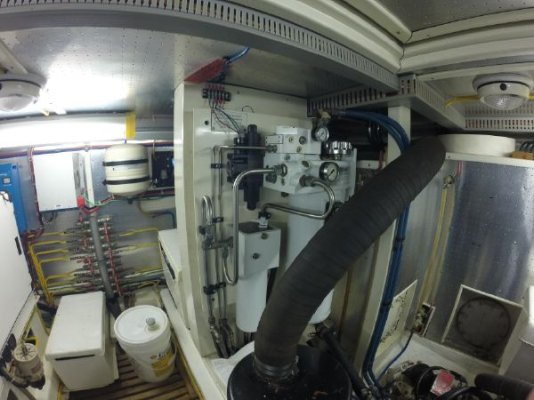Among the most common defects in systems like this I encounter is the lack of a continuous downhill run after the spill over point, the wet riser above the water lift muffler. Just about every engine and gen manufacturer out there calls for a minimum of 1/2" per foot downward slope or about 2 degrees. Many also include a minimum distance/drop between the water injection point and a water lift muffler, and a maximum lift height upon leaving the water lift muffler. I use this diagram to illustrate basic requirements to boat owners and installers, however I also caution them to follow precisely the instructions of the specific engine or genset manufacturer...
http://www.northern-lights.com/media/PDFs/misc_pdfs/dont_drown_me.pdf
The Cummins installation manual, which is over 150 pages long, dedicates nearly 20 pages to exhaust systems alone.
None of this should be left to guesswork, Perkins published a manual called "Marine Installation Know-How" that walks installers through the exhaust system requirements, including required drop between injection elbow and muffler and required slope. Only engines that use a water lift muffler and wet riser can suffer from flooding caused by excessive cranking, dry riser exhaust designs, those that include a the continuous downward slope from the water injection point and an dry apex above the WL, cannot suffer from flooding as a result of extended cranking, as the water injected into the exhaust naturally runs overboard, it never has to be pushed up hill. Most genset installations on the other hand use the water lift muffler arrangement and they can experience flooding. I'm seeing some new gensets that include a placard warning users about this possibility. It can be overcome by either closing the intake seacock or removing the drain plug on the muffler during extended cranking.
Having temporarily installed a clear section of hose on wet exhaust systems on a couple of occasions to diagnose water/gas mixing issues, it's surprising just how much of the hose volume is gas and not water.
There is an entire ABYC chapter, P-1, on the subject of exhaust systems including, "P-1.5.11
The exhaust system shall be designed and installed to prevent cooling water, rain water, or raw water from entering the engine through the exhaust system under all normal operating conditions. The exhaust system design shall consider the drop height of the manifold above the waterline and a provision for downward slope of the exhaust system."





